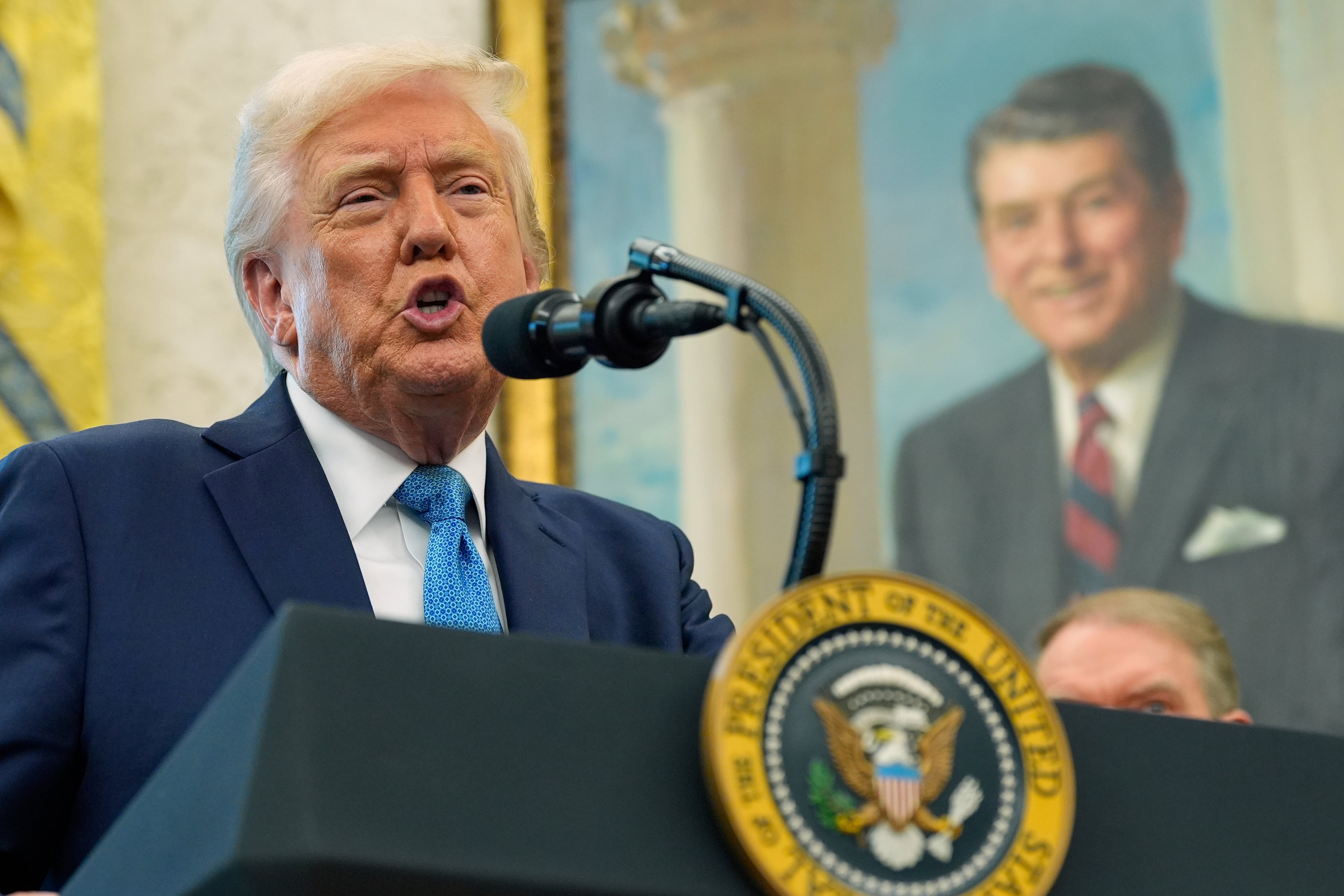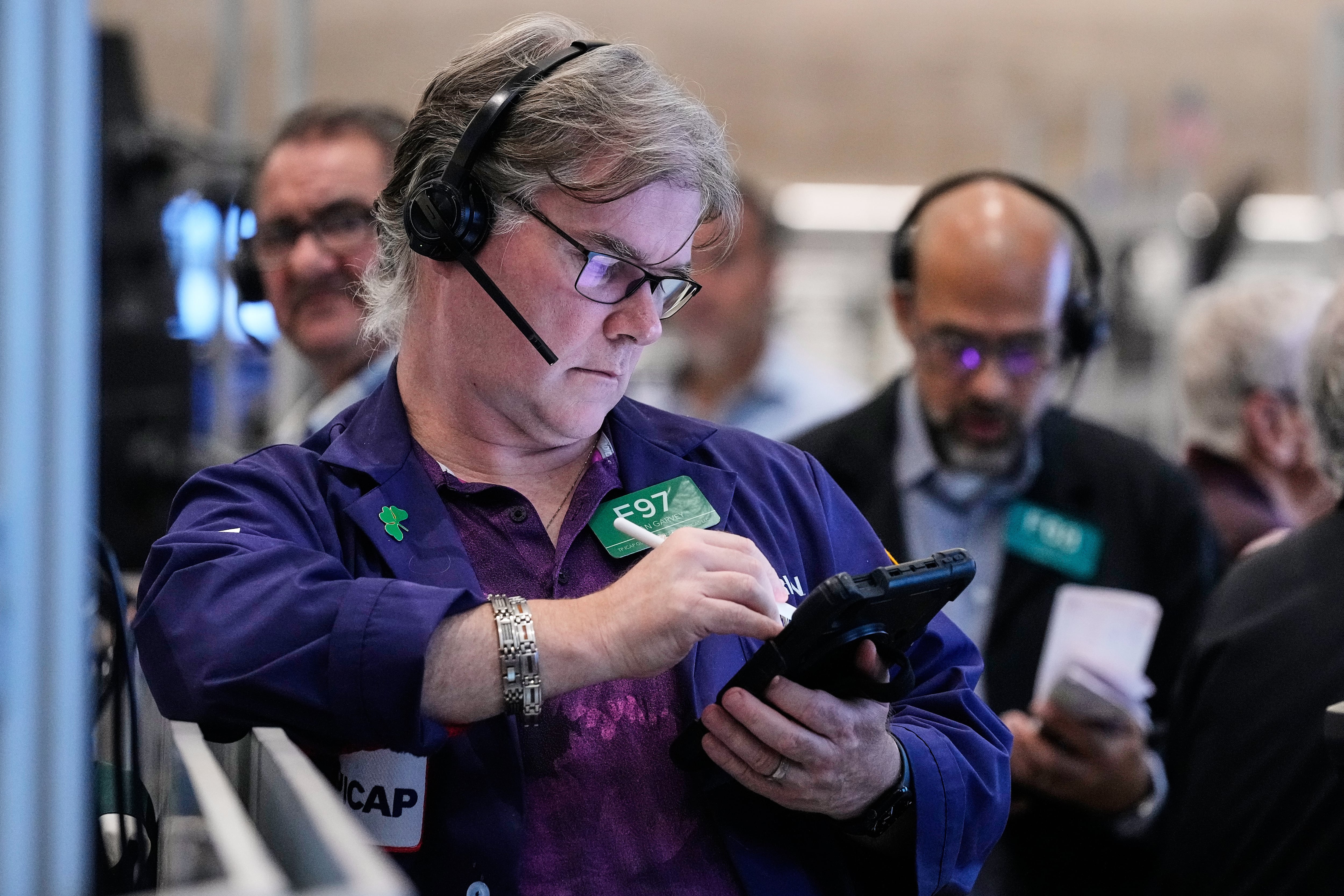WASHINGTON (AP) — President Donald Trump said Tuesday he has no plans to fire Federal Reserve Chair Jerome Powell, just days after his statement that he would like to terminate the head of the U.S. central bank caused a stock market selloff.
“I have no intention of firing him,” Trump told reporters.
The U.S. president had previously insinuated otherwise as he said he could fire Powell if he wanted to, having been frustrated by the Fed putting a pause on cuts to short-term interest rates. Powell has said that Trump’s tariffs are creating uncertainty about slower growth and higher inflationary pressures, while the president maintains that inflationary worries are essentially non-existent.
The president maintains that energy and grocery prices are falling, so the Fed should cut its benchmark rates because inflation is no longer a threat to the U.S. economy, Trump said. His remarks indicated that he still plans to use the bully pulpit to pressure a U.S. central bank that is committed to resisting political pressure as part of its mandate to stabilize prices and maximize employment.
Trump's frustration led him to post on social media last Thursday: “Powell’s termination cannot come fast enough!”
The Fed chair’s term ends in May 2026.
On Tuesday, Trump continued to air his grievances about Powell, even though he said the Fed chair would stay on the job despite the president's belief that inflation is no longer a problem.
“It’s all coming down,” Trump said. “The only thing that hasn’t come down, but hasn’t gone up much, are interest rates. And we think the Fed should lower the rate. We think that it’s a perfect time to lower the rate. And we’d like to see our chairman be early or on time, as opposed to late. Late’s not good.”
Trump again attacked Powell on Monday on his Truth Social account, saying that “there is virtually No Inflation.”
The comment built on a statement by Trump last week that said he believed he could fire Powell, a move that shook financial markets and frightened investors that interest rates might be subject to politics instead of economic fundamentals.
“If I want him out, he’ll be out of there real fast, believe me,” Trump said in the Oval Office last Thursday. “I’m not happy with him.”
The Fed has held off on further reductions to its federal funds rate, which influences the money supply by setting the interest rate that banks can charge each other for overnight loans. That rate is effectively 4.33%, down a fully percentage point since last August as inflationary pressures appeared to ease.
The Fed had initially raised that rate because of inflation spiking during Joe Biden’s presidency, a byproduct of the global economy recovering from the COVID-19 pandemic and higher energy and food prices after Russia invaded Ukraine in 2022.
But Powell has also been willing to challenge the president's trade policies. He said last week in a Chicago speech that Trump’s tariff policies would hurt the U.S. economy, a direct warning to a White House trying to sell the import taxes as a long-term positive for the country.
“The level of tariff increases announced so far is significantly larger than anticipated, and the same is likely to be true of the economic effects which will include higher inflation and slower growth,” Powell said last week at the Economic Club of Chicago.
President Donald Trump said he has decided to lower his combined tariff rates on imports of Chinese goods to 47% after talks with Chinese leader Xi Jinping on curbing fentanyl trafficking.
The Federal Reserve cut its key interest rate Wednesday for a second time this year as it seeks to shore up economic growth and hiring even as inflation stays elevated. The move comes amid a fraught time for the central bank, with hiring sluggish and yet inflation stuck above the Fed’s 2% target. Compounding its challenges, the central bank is navigating without much of the economic data it typically relies on from the government. The Fed has signaled it may reduce its key rate again in December but the data drought raises the uncertainty around its next moves. Fed Chair Jerome Powell told reporters that there were “strongly differing views” at the central bank's policy meeting about to proceed going forward.
The Federal Reserve will almost certainly cut its key interest rate on Wednesday and could signal it expects another cut in December as the central bank seeks to bolster hiring. A cut Wednesday would be the second this year and could benefit consumers by bringing down borrowing costs for mortgages and auto loans. Since Fed chair Jerome Powell strongly signaled in late August that rate cuts were likely this year, the average 30-year mortgage rate has fallen to about 6.2% from 6.6%. Still, the Fed is navigating an unusual period for the U.S. economy and its future moves are harder to anticipate than is typically the case.
Stocks are rallying toward more records ahead of a week packed with potentially market-moving events. The S&P 500 rose 1% Monday. The Dow Jones Industrial Average added 224 points, and the Nasdaq composite jumped 1.7%. Stocks also climbed in Asia ahead of a meeting on Thursday between the heads of the United States and China. The hope is that the talks could clear rising tensions between the world’s two largest economies. This upcoming week will feature profit reports from some of Wall Street's most influential companies and a meeting by the Federal Reserve on interest rates. Gold fell back toward $4,000 per ounce.
U.S. and Chinese officials say a trade deal between the world’s two largest economies is drawing closer. The sides have reached an initial consensus for President Donald Trump and Chinese leader Xi Jinping to aim to finalize during their high-stakes meeting Thursday in South Korea. Any agreement would be a relief to international markets. Trump's treasury secretary says discussions with China yielded preliminary agreements to stop the precursor chemicals for fentanyl from coming into the United States. Scott Bessent also says Beijing would make “substantial” purchases of soybean and other agricultural products while putting off export controls on rare earth elements needed for advanced technologies.
Some seniors say the Social Security Administration's cost-of-living adjustment won’t help much in their ability to pay for their daily expenses. The agency announced Friday the annual cost-of-living adjustment will go up by 2.8% in 2026, translating to an average increase of more than $56 for retirees every month. Eighty-year-old Florence, South Carolina, resident Linda Deas says it does not match the current "affordability crisis.” The benefits increase will go into effect for Social Security recipients beginning in January. Friday’s announcement was meant to be made last week but was delayed because of the federal government shutdown. Recipients got a 2.5% COLA boost in 2025 and a 3.2% increase in 2024.









